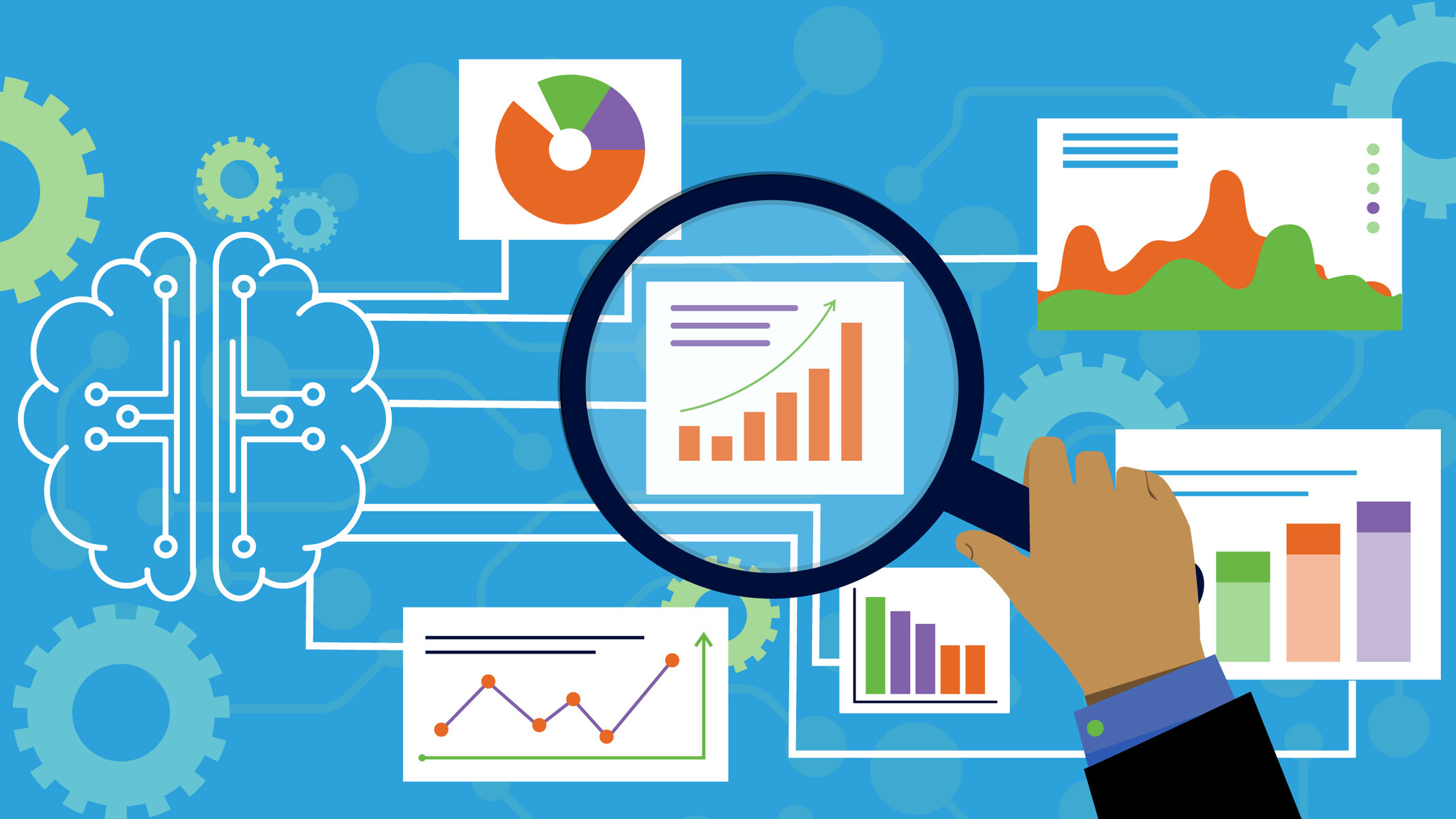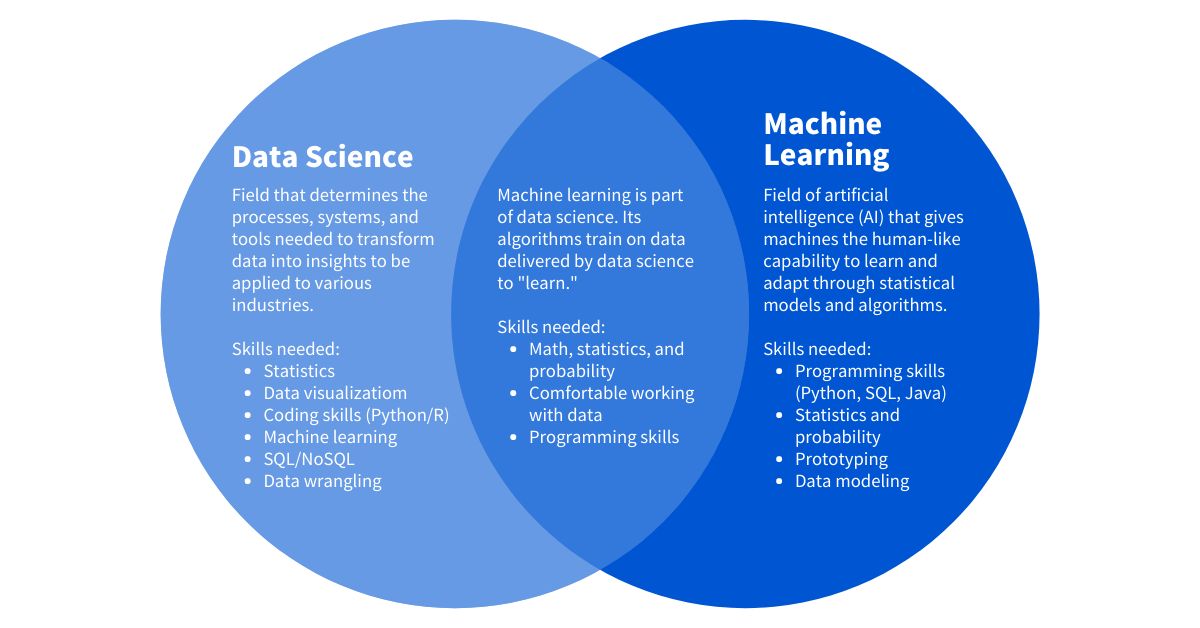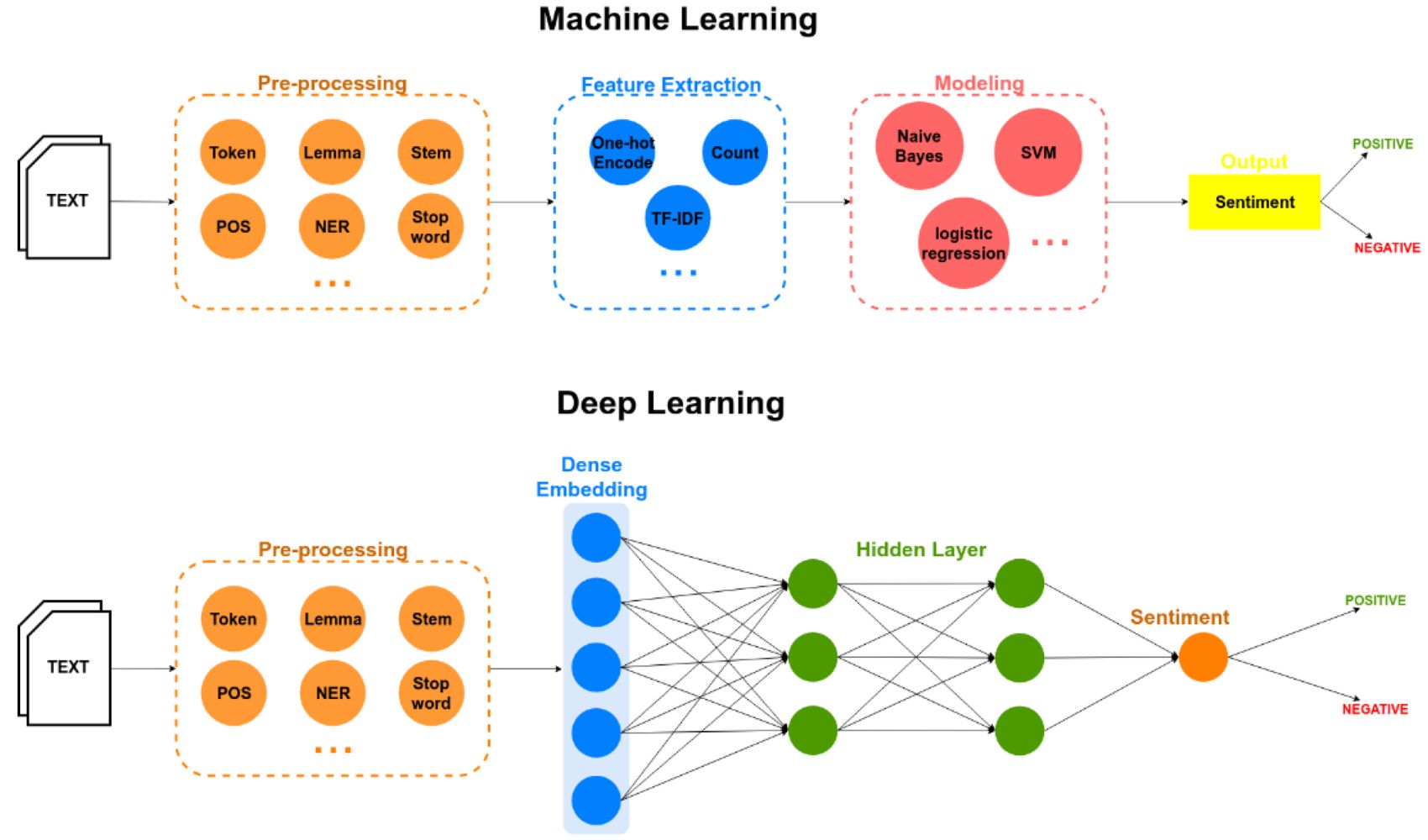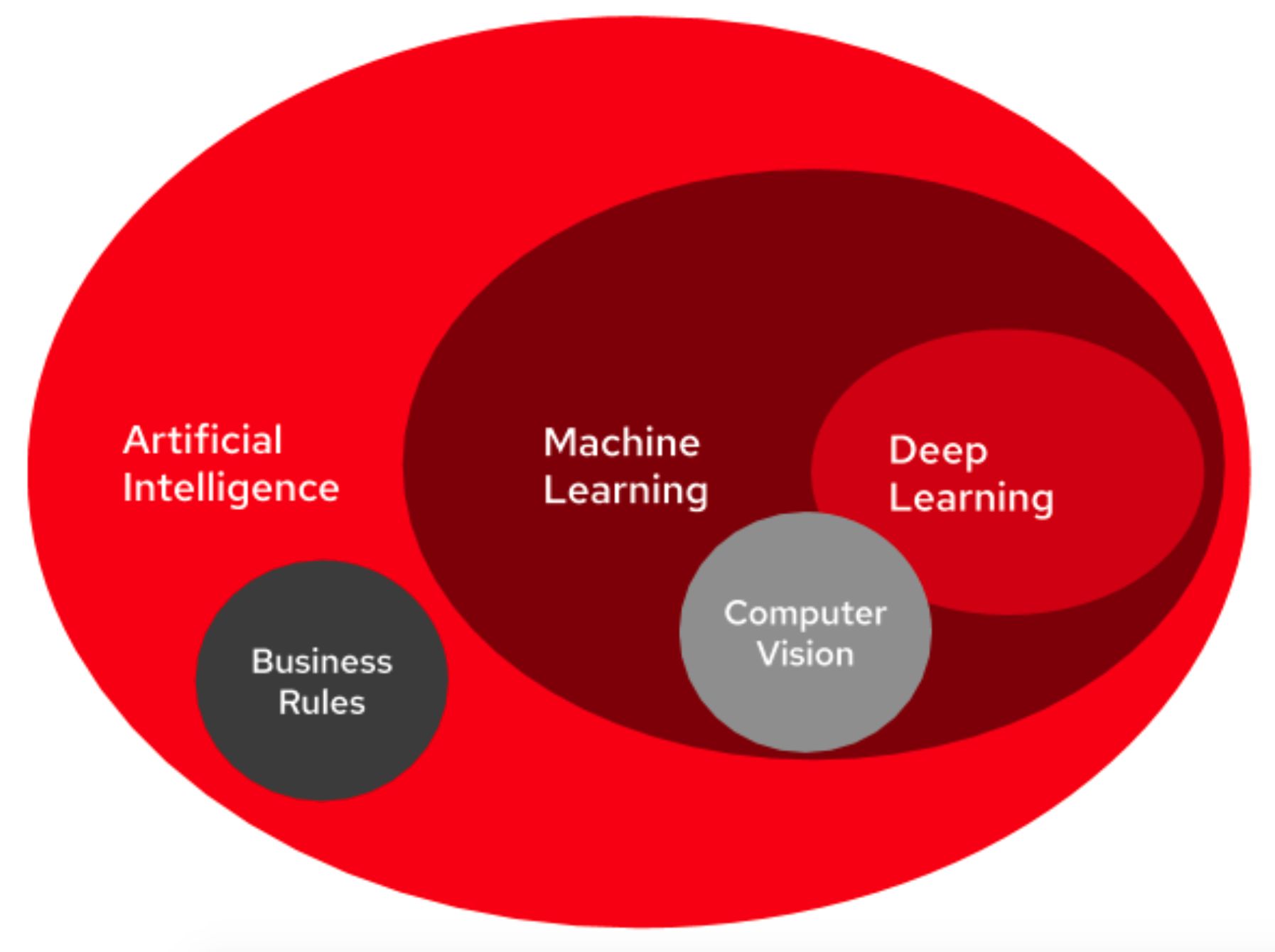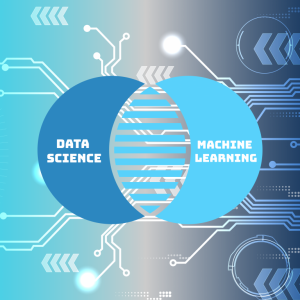Introduction
Welcome to the evolving world of machine learning and its impact on businesses. In today’s digital age, data plays a crucial role in decision-making and strategizing for businesses of all sizes. Machine learning, a subset of artificial intelligence, offers innovative approaches to extracting insights and patterns from massive datasets. This unique technology enables businesses to make data-driven decisions, automate processes, and enhance overall efficiency.
What exactly is machine learning? At its core, machine learning is the ability of computer systems to learn and improve from experience without being explicitly programmed. It involves building algorithms and models that can analyze and interpret large volumes of data, subsequently providing accurate predictions or recommendations based on patterns and trends.
Machine learning has gained significant traction in recent years due to the exponential growth in data and the availability of advanced computing power. It has become an integral part of various sectors, including finance, healthcare, marketing, and e-commerce. By leveraging machine learning, businesses can gain valuable insights, streamline operations, and deliver personalized experiences to their customers.
In this article, we will delve deeper into the benefits of machine learning for businesses. We will explore how machine learning can enhance decision-making processes, automate repetitive tasks, improve efficiency and productivity, personalize user experiences, predict customer behaviors, detect fraud, manage big data, and overcome implementation challenges.
So, whether you’re a startup, a small business, or a multinational corporation, machine learning has the potential to revolutionize the way you operate and stay ahead of the competition. Let’s dive into the fascinating world of machine learning and discover its immense potential for your business.
What is Machine Learning?
Machine learning is a branch of artificial intelligence that focuses on developing algorithms and models that enable computer systems to learn and improve from experience. Unlike traditional programming, where explicit instructions are provided, machine learning algorithms are designed to analyze and interpret large volumes of data, and automatically learn patterns and make predictions without being explicitly programmed.
At its core, machine learning involves the use of statistical techniques to enable computers to learn from data and make informed decisions or predictions. These algorithms can identify patterns, correlations, and trends within datasets, allowing businesses to extract valuable insights and drive data-driven decision-making.
There are several different types of machine learning, including supervised learning, unsupervised learning, and reinforcement learning. In supervised learning, the algorithm is trained on labeled data, where it learns to make predictions or classifications based on predefined outputs. Unsupervised learning, on the other hand, involves training the algorithm on unlabeled data, and it learns to find patterns or clusters within the data. Reinforcement learning is a type of machine learning where an agent learns to interact with an environment and maximize rewards through trial and error.
One of the key components of machine learning is the use of training data sets. These data sets are used to teach the algorithm how to make accurate predictions or classifications. The quality and size of the training data have a significant impact on the accuracy and reliability of the machine learning model. Therefore, selecting relevant and diverse training data is crucial in achieving optimal results.
Machine learning algorithms can be implemented in various applications, from recommendation systems and fraud detection to autonomous vehicles and natural language processing. As technology advances and the availability of data increases, the potential applications of machine learning continue to expand.
In the next sections, we will explore how machine learning can benefit businesses across different industries. We will examine how it can enhance decision-making processes, automate business tasks, improve efficiencies, personalize user experiences, predict customer behaviors, detect and prevent fraud, and manage and analyze extensive datasets. Let’s explore the exciting possibilities that machine learning brings to the business world.
Benefits of Machine Learning for Businesses
Machine learning offers a wide range of benefits for businesses across various industries. From improving decision-making processes to automating tasks and personalizing user experiences, machine learning has the potential to revolutionize how businesses operate and stay ahead of the competition.
1. Enhancing Decision Making: Machine learning algorithms can analyze vast amounts of data and uncover hidden insights, allowing businesses to make informed and data-driven decisions. By leveraging predictive analytics and machine learning models, businesses can identify patterns, trends, and correlations in their data, enabling them to make accurate predictions and take proactive actions.
2. Automating Business Processes: Machine learning can automate repetitive and labor-intensive tasks, freeing up valuable human resources to focus on more strategic activities. Whether it’s data entry, report generation, or customer support, machine learning algorithms can streamline workflows, reduce errors, and enhance overall efficiency.
3. Improving Efficiency and Productivity: With faster and more accurate data analysis, businesses can improve their operational efficiency and productivity. Machine learning algorithms can handle large and complex datasets, extracting insights in real-time and providing actionable recommendations to optimize processes.
4. Personalizing User Experiences: Machine learning enables businesses to deliver personalized experiences to their users or customers. By analyzing user behavior, preferences, and demographics, machine learning algorithms can tailor recommendations, content, and advertisements, increasing customer satisfaction and engagement.
5. Predicting Customer Behavior and Trends: Machine learning models can analyze customer data and historical patterns to predict customer behavior and trends. This information can be invaluable for businesses in terms of marketing strategies, inventory management, and product development, allowing them to stay ahead of the competition and meet customer demands more effectively.
6. Detecting and Preventing Fraud: Machine learning algorithms have proven to be highly effective in detecting and preventing fraudulent activities. By analyzing historical and real-time data, machine learning models can identify patterns and anomalies that indicate fraudulent behavior, enabling businesses to take proactive measures to prevent financial losses.
7. Managing and Analyzing Big Data: With the exponential growth of data, businesses face the challenge of managing and extracting meaningful insights from vast amounts of information. Machine learning algorithms can handle big data efficiently, identifying patterns and trends that may not be apparent to human analysts, thus unlocking valuable business intelligence.
Implementing machine learning in businesses is not without its challenges, such as data quality and privacy concerns, algorithm bias, and the need for skilled professionals. However, the benefits outweigh the challenges, and businesses that embrace machine learning can gain a competitive advantage and thrive in the digital era.
Next, we will explore how machine learning can enhance decision-making processes by providing accurate predictions and valuable insights.
Enhancing Decision Making with Machine Learning
One of the significant benefits of machine learning for businesses is its ability to enhance decision-making processes by providing accurate predictions and valuable insights. Traditional decision-making approaches often rely on historical data analysis and manual calculations, which can be time-consuming and prone to human error. Machine learning algorithms, on the other hand, can analyze vast amounts of data in real-time and extract meaningful patterns, enabling businesses to make data-driven decisions with confidence.
The implementation of machine learning models in decision-making processes can lead to various advantages:
1. Predictive Analytics: Machine learning models can analyze historical data and identify patterns that are not apparent to human analysts. With the ability to make accurate predictions based on these patterns, businesses can anticipate future outcomes and make proactive decisions. This is particularly valuable in industries such as finance, where predicting market trends, risk assessment, and investment strategies can significantly impact business success.
2. Optimization: Machine learning algorithms can optimize decision-making processes by analyzing multiple variables and identifying the most optimal solution. For example, in supply chain management, machine learning models can optimize inventory levels, production schedules, and distribution routes to minimize costs and maximize efficiency.
3. Real-time Insights: Machine learning models can continuously analyze data in real-time, providing businesses with up-to-date insights. This enables organizations to adapt and respond quickly to dynamically changing market conditions, customer preferences, and competitive landscapes. Real-time insights are particularly valuable in sectors such as e-commerce, where personalized recommendations and targeted advertisements can significantly improve customer engagement and conversion rates.
4. Risk Assessment: Machine learning algorithms can assess risks by analyzing historical data and identifying potential risks or anomalies. Whether it’s fraud detection, credit risk assessment, or cybersecurity, machine learning models can detect patterns that indicate potential risks and enable businesses to take necessary precautions to mitigate them.
5. Customer Segmentation: Machine learning models can analyze customer data and segment customers based on their preferences, behaviors, and demographics. This enables businesses to tailor their marketing strategies, product offerings, and customer experiences to specific customer segments, improving customer satisfaction and retention. For example, e-commerce platforms can use machine learning to create personalized product recommendations based on individual customer preferences and browsing history.
6. Data Visualization: Machine learning algorithms can transform complex and large datasets into visual representations that are easily understandable. Data visualization enables decision-makers to quickly grasp key insights and trends, facilitating more informed and efficient decision-making processes.
By integrating machine learning into decision-making processes, businesses can leverage the power of data and analytics to make more accurate, proactive, and informed decisions. Next, we will explore how machine learning can automate business processes, freeing up valuable time and resources.
Automating Business Processes with Machine Learning
Machine learning has the potential to revolutionize the way businesses operate by automating repetitive and time-consuming tasks. By leveraging the power of machine learning algorithms, businesses can improve efficiency, reduce human error, and free up valuable time and resources to focus on more strategic activities.
Here are some ways in which machine learning can automate business processes:
1. Data Entry and Extraction: Machine learning algorithms can be trained to automatically extract relevant information from documents, such as invoices, receipts, and contracts. This eliminates the need for manual data entry, reducing errors and increasing efficiency. For example, in the finance industry, machine learning can automate the process of extracting data from financial statements and inputting it into accounting systems.
2. Image and Speech Recognition: Machine learning algorithms can analyze images and speech to automate tasks such as image categorization, object recognition, and speech-to-text conversion. This technology is particularly useful in industries such as healthcare, where medical images can be processed and analyzed to assist in diagnosis, or in call centers, where machine learning can transcribe and analyze customer interactions to extract valuable insights.
3. Customer Service and Support: Machine learning models can automate customer service and support processes by employing chatbots or virtual assistants. These AI-powered bots can handle basic customer inquiries, provide information, and even assist in troubleshooting common issues. By automating customer support, businesses can provide round-the-clock assistance and significantly reduce response times.
4. Inventory Management: Machine learning algorithms can analyze historical sales data, current inventory levels, and external factors to accurately predict demand patterns. This enables businesses to automate inventory management processes, ensuring optimal stock levels and minimizing the risk of stockouts or overstocking.
5. Process Optimization: Machine learning algorithms can optimize complex business processes by analyzing large datasets and identifying patterns or bottlenecks. This allows businesses to streamline operations, eliminate inefficiencies, and improve overall productivity. For example, in manufacturing, machine learning can optimize production schedules, resource allocation, and quality control processes.
6. Workflow Automation: Machine learning can automate workflows by intelligently routing tasks to the appropriate departments or teams. By analyzing historical data and decision-making patterns, machine learning algorithms can identify the most efficient workflow paths and automatically assign and prioritize tasks accordingly.
By automating business processes with machine learning, businesses can reduce costs, improve accuracy, and enhance overall productivity. However, it’s essential to ensure proper implementation and integration of machine learning algorithms to maximize the benefits while minimizing any potential risks or challenges. In the next section, we will explore how machine learning can improve efficiency and productivity in a business setting.
Improving Efficiency and Productivity with Machine Learning
Machine learning has the potential to significantly improve efficiency and productivity in businesses across various industries. By leveraging machine learning algorithms, businesses can streamline processes, automate repetitive tasks, and make data-driven decisions, ultimately enhancing overall productivity.
Here are several ways in which machine learning can improve efficiency and productivity:
1. Automating Repetitive Tasks: Machine learning algorithms can automate repetitive and time-consuming tasks, freeing up valuable time for employees to focus on more complex and strategic activities. This not only eliminates human errors but also allows employees to utilize their skills and expertise more effectively.
2. Optimizing Workflows: Machine learning algorithms can analyze data and identify areas of inefficiency within workflows. By optimizing workflows, businesses can eliminate bottlenecks, reduce lead times, and improve overall operational efficiency.
3. Intelligent Process Automation: Machine learning algorithms can provide intelligent process automation by learning from past patterns and making decisions based on real-time data. This enables businesses to automate decision-making processes, leading to faster and more accurate outcomes.
4. Resource Allocation: Machine learning algorithms can analyze historical data and external factors to optimize resource allocation. This includes managing personnel, equipment, and inventory to ensure optimal utilization and minimize wastage.
5. Streamlining Customer Interactions: Machine learning algorithms can analyze customer data and preferences to personalize and automate customer interactions. This can include automated email marketing campaigns, chatbots for customer support, and personalized product recommendations.
6. Predictive Maintenance: Machine learning algorithms can help businesses implement predictive maintenance strategies. By analyzing equipment sensor data, these algorithms can detect patterns and anomalies, predicting potential equipment failures and enabling proactive maintenance actions.
7. Real-Time Analytics: Machine learning algorithms can analyze real-time data and provide actionable insights, enabling businesses to make informed decisions in the moment. This allows for quicker responses to changing market conditions, customer demands, and operational requirements.
8. Continuous Improvement: Machine learning algorithms can continuously learn and adapt to new data, enabling ongoing process improvements. By analyzing patterns and trends in data, businesses can identify areas for enhancement and implement iterative changes to streamline operations.
By harnessing the power of machine learning, businesses can optimize processes, reduce costs, and improve overall productivity. However, it’s crucial to have a clear strategy and understanding of the specific business needs before implementing machine learning solutions. In the next section, we will explore how machine learning can personalize user experiences.
Personalizing User Experiences with Machine Learning
Machine learning has transformed the way businesses interact with their users by enabling personalized experiences. By analyzing vast amounts of user data, machine learning algorithms can understand individual preferences, behaviors, and demographics to tailor and personalize user experiences. This level of personalization not only enhances customer satisfaction but also improves engagement and increases brand loyalty.
Here are several ways in which machine learning can personalize user experiences:
1. Personalized Recommendations: Machine learning algorithms can analyze user behavior, browsing history, and purchase patterns to provide personalized product recommendations. These recommendations can be based on similar user profiles, past preferences, or collaborative filtering, improving the chances of conversion and enhancing the overall shopping experience.
2. Dynamic Pricing: Machine learning algorithms can optimize pricing strategies by analyzing factors such as demand, availability, and customer segments. This enables businesses to offer dynamic pricing that is personalized to each user, maximizing revenue while remaining competitive.
3. Customized Content Delivery: Machine learning algorithms can analyze user preferences, demographics, and past interactions to deliver customized content. Whether it’s tailored news articles, curated playlists, or targeted advertisements, machine learning ensures that users receive content that is relevant and engaging to their specific interests.
4. Customer Experience Personalization: Machine learning algorithms can analyze customer data to personalize every touchpoint of the customer journey. This includes personalized email campaigns, personalized website experiences, and even personalized customer support interactions. By tailoring the customer experience to individual preferences, businesses can build stronger relationships and increase customer satisfaction.
5. Adaptive User Interfaces: Machine learning algorithms can learn user behavior patterns and adapt the user interface accordingly. This ensures that user interfaces are intuitive and tailored to each user’s preferences, leading to a more seamless and personalized experience.
6. Smart Chatbots and Virtual Assistants: Machine learning algorithms can power chatbots and virtual assistants that understand natural language and can provide personalized assistance based on individual preferences. These AI-driven assistants can handle customer inquiries, make recommendations, and even anticipate user needs, providing a personalized and efficient customer service experience.
7. Customer Segmentation: Machine learning algorithms can segment users based on their demographics and behavior. This allows businesses to target specific segments with personalized marketing campaigns and promotions, creating a more personalized and impactful approach to customer engagement.
By personalizing user experiences, businesses can create a deeper connection with their users, increase customer loyalty, and drive long-term business growth. However, it is essential to maintain transparency and data privacy while implementing machine learning-based personalization strategies. In the next section, we will explore how machine learning can predict customer behavior and trends.
Predicting Customer Behavior and Trends with Machine Learning
Machine learning algorithms have the capability to analyze large volumes of customer data and provide valuable insights into customer behavior and trends. By leveraging machine learning, businesses can predict customer preferences, anticipate their needs, and stay ahead of market trends. This enables businesses to make informed decisions, tailor their strategies, and enhance customer experiences.
Here are several ways in which machine learning can predict customer behavior and trends:
1. Customer Segmentation: Machine learning algorithms can analyze customer data to segment customers based on their demographics, preferences, and behaviors. This allows businesses to target specific customer segments with personalized marketing strategies and tailored product offerings.
2. Churn Prediction: Machine learning models can analyze historical customer data to identify patterns that indicate potential churn. By leveraging these models, businesses can take proactive measures to retain customers, such as offering personalized discounts, loyalty programs, or targeted communications.
3. Upsell and Cross-sell Opportunities: By analyzing customer purchasing patterns and preferences, machine learning algorithms can predict potential upsell and cross-sell opportunities. This enables businesses to offer personalized recommendations and targeted promotions, increasing customer engagement and driving additional revenue.
4. Customer Lifetime Value: Machine learning models can analyze historical customer data to predict the potential lifetime value of a customer. This information helps businesses prioritize customer acquisition efforts and allocate resources accordingly.
5. Trend Analysis: Machine learning algorithms can analyze large datasets to identify emerging market trends and patterns. By leveraging these insights, businesses can adapt their strategies and offerings to meet changing customer demands, staying ahead of the competition in a dynamic market environment.
6. Sentiment Analysis: Machine learning models can analyze customer feedback and social media data to determine customer sentiment and opinion. This information helps businesses understand customer perceptions, identify areas for improvement, and make data-driven decisions to enhance customer satisfaction.
7. Personalized Pricing: Machine learning algorithms can analyze customer data and external factors to predict the price sensitivity of individual customers. This allows businesses to offer personalized pricing strategies that align with each customer’s perceived value, enhancing customer satisfaction and improving sales.
By leveraging machine learning to predict customer behavior and trends, businesses can create more effective marketing strategies, improve customer retention, and stay ahead of evolving market demands. However, it is crucial to ensure ethical use of customer data and to maintain customer trust and privacy. In the next section, we will explore how machine learning can help businesses detect and prevent fraud.
Detecting and Preventing Fraud with Machine Learning
Fraud detection is a significant concern for businesses across various industries. Traditional rule-based systems often struggle to keep up with evolving fraud techniques, making it challenging to identify and prevent fraudulent activities. However, machine learning has emerged as a powerful tool for detecting and preventing fraud by analyzing patterns, anomalies, and trends within large datasets.
Here are several ways in which machine learning can help businesses detect and prevent fraud:
1. Anomaly Detection: Machine learning algorithms can analyze historical data and identify abnormal patterns or behaviors that may indicate fraudulent activities. By learning from past data, these algorithms can adapt to new fraud patterns, identifying suspicious transactions and flagging them for further investigation.
2. Real-time Fraud Detection: Machine learning models can monitor transactions in real-time and analyze various factors, including transaction type, amount, location, and user behavior. This enables businesses to identify potential fraudulent activities as they occur, enabling immediate actions to prevent financial losses.
3. Identity Verification: Machine learning algorithms can analyze customer data and behavior patterns to ascertain the legitimacy of user identities. By detecting inconsistencies or suspicious behaviors, businesses can flag potential identity theft or fraudulent account creation, preventing unauthorized access or fraudulent transactions.
4. Network Analysis: Machine learning algorithms can analyze patterns of relationships and interactions between entities to detect fraud across networks. By identifying connections between suspicious entities, such as fake accounts or organized fraud rings, businesses can gain insights and take appropriate actions to prevent fraudulent activities.
5. Credit Card Fraud Detection: Machine learning models can analyze credit card transaction data to identify unusual spending patterns, fraudulent charges, or stolen card information. By leveraging historical data and real-time monitoring, businesses can detect and prevent credit card fraud, protecting both customers and the company’s financial interests.
6. Behavioral Biometrics: Machine learning algorithms can analyze user behavior, such as typing patterns, mouse movements, and navigation habits, to build unique behavioral biometric profiles. This enables businesses to detect anomalies and identify potential fraudsters impersonating legitimate users.
7. Fraudulent Claims Detection: Machine learning algorithms can analyze various data sources, including text and image data, to identify potentially fraudulent insurance or warranty claims. By detecting inconsistencies, patterns, or misleading information, businesses can reduce fraudulent payouts and protect against financial losses.
Implementing machine learning for fraud detection is an ongoing process that requires continuous monitoring and refinement. It is crucial for businesses to maintain a balance between accurately detecting fraud and minimizing false positives, as overly stringent fraud detection systems can lead to customer inconvenience and false accusations. By leveraging machine learning’s capabilities, businesses can significantly enhance their fraud detection and prevention efforts.
In the next section, we will explore how machine learning can assist businesses in managing and analyzing big data, unlocking immense value and insights.
Managing and Analyzing Big Data with Machine Learning
In today’s data-driven world, businesses are grappling with the challenges of managing and deriving insights from massive volumes of data, commonly referred to as big data. Machine learning offers powerful techniques to effectively manage and analyze big data, unlocking valuable insights and driving informed decision-making.
Here are several ways in which machine learning can assist businesses in managing and analyzing big data:
1. Data Processing and Cleaning: Machine learning algorithms can automate the process of data cleaning and preprocessing, which involves removing inconsistencies, dealing with missing values, and transforming data into a suitable format. By automating these tasks, businesses can save time and ensure data accuracy before analysis.
2. Text and Sentiment Analysis: Machine learning algorithms can analyze large volumes of text data, such as customer reviews, social media posts, and customer feedback, to derive sentiment and extract valuable insights. By understanding customer sentiments and opinions, businesses can make data-driven decisions, improve products or services, and enhance customer satisfaction.
3. Pattern Recognition: Machine learning algorithms can identify patterns, trends, and correlations within large datasets, even when humans may not be able to perceive them. By leveraging pattern recognition capabilities, businesses can uncover hidden insights and make data-driven decisions to optimize processes, improve efficiencies, and drive innovation.
4. Forecasting and Predictive Analytics: Machine learning models can process historical and real-time data to forecast future trends, demand patterns, and performance metrics. This enables businesses to make proactive decisions, allocate resources effectively, and anticipate market changes.
5. Recommendation Systems: Machine learning algorithms excel in building recommendation systems that analyze user preferences and behaviors to provide personalized recommendations. By leveraging big data, businesses can create targeted and personalized recommendations, offering enhanced user experiences and driving customer engagement.
6. Cluster Analysis: Machine learning algorithms can perform cluster analysis on large datasets, grouping similar data points together based on their characteristics. This helps in understanding customer segments, identifying market trends, and tailoring strategies to specific target groups.
7. Scaling and Parallel Processing: Machine learning frameworks and technologies, such as Apache Hadoop and Apache Spark, can effectively scale and parallel process big data. This allows businesses to analyze large datasets efficiently, reducing processing time and increasing productivity.
By leveraging machine learning techniques to manage and analyze big data, businesses can gain valuable insights, make data-driven decisions, and uncover hidden patterns and trends. However, it is essential to ensure data privacy, security, and compliance while working with sensitive data.
In the next section, we will explore the challenges and considerations in implementing machine learning in businesses and strategies to overcome them.
Overcoming Challenges and Implementing Machine Learning in Business
Implementing machine learning in a business setting can be a complex endeavor, often accompanied by various challenges. However, by understanding these challenges and implementing effective strategies, businesses can successfully integrate machine learning into their operations and harness its benefits. Here are some common challenges and considerations when implementing machine learning in business:
1. Data Quality and Availability: Machine learning algorithms rely heavily on high-quality and relevant data for accurate predictions and insights. It is important for businesses to ensure data cleanliness, deal with missing values, and address bias in data collection to overcome potential inaccuracies in machine learning models. Additionally, businesses should assess the availability of data sources and establish data governance practices to facilitate efficient data management.
2. Resource Allocation: Implementing machine learning requires adequate resources, including computing power, storage, and skilled personnel. Businesses should allocate the necessary budget, infrastructure, and workforce to support machine learning initiatives. This may involve training existing staff, hiring data scientists, or collaborating with external experts to ensure successful implementation and maintenance of machine learning systems.
3. Algorithm Selection and Integration: There is a wide array of machine learning algorithms available, each suited for different tasks and datasets. Selecting the most appropriate algorithm for a specific business use case is crucial. Additionally, integration of the selected algorithm into existing technology infrastructure should be carefully planned, ensuring compatibility and scalability.
4. Ethical Use of Data: Businesses should prioritize ethical considerations when implementing machine learning systems. This includes ensuring data privacy, transparency, and compliance with relevant regulations. Transparent communication with users about data usage, obtaining proper consent, and regularly auditing machine learning systems for fairness and bias are important steps to maintain trust and ethical practices.
5. Change Management and Adoption: Introducing machine learning into a business may require changes in processes, workflows, and employee roles. Organizations should provide adequate training and support to employees to facilitate their adoption of machine learning technologies. Clear communication about the benefits and goals of machine learning initiatives is vital to foster enthusiasm and cooperation.
6. Continuous Monitoring and Improvement: Machine learning models require regular monitoring and refinement to ensure their accuracy and effectiveness over time. Businesses should establish mechanisms for monitoring model performance, analyzing outcomes, and fine-tuning models as new data becomes available. Continuous improvement ensures that machine learning systems align with evolving business needs and produce reliable results.
By addressing these challenges and considering the key considerations, businesses can successfully implement machine learning and leverage its transformative power. Machine learning has the potential to drive innovation, improve decision-making processes, and unlock valuable insights that can propel businesses to stay ahead in a competitive marketplace.
In the next section, we will wrap up our exploration of machine learning’s impact on businesses and summarize the key takeaways from this article.
Conclusion
Machine learning has become a game-changer for businesses, offering a wide range of benefits in various aspects of operations. From enhancing decision-making processes and automating business tasks to improving efficiency, personalizing user experiences, predicting customer behavior, detecting fraud, and managing big data, machine learning has revolutionized how businesses operate in today’s data-driven world.
By leveraging machine learning algorithms, businesses can gain valuable insights, make data-driven decisions, and optimize processes. Predictive analytics, automation, and personalization enable businesses to stay ahead of market trends, improve customer satisfaction, and drive revenue growth. Furthermore, machine learning plays a critical role in detecting and preventing fraud, protecting businesses from financial losses and reputational damage.
However, implementing machine learning is not without its challenges. Businesses must address issues related to data quality, resource allocation, algorithm selection, and ethical considerations. Change management efforts and continuous monitoring and improvement are also vital to ensure the successful implementation and long-term success of machine learning initiatives.
Despite these challenges, the potential of machine learning for businesses is tremendous. By embracing machine learning and staying up-to-date with technological advancements, businesses can seize opportunities, gain a competitive edge, and unlock the full potential of their data.
As we continue to advance into the digital era, businesses that harness the power of machine learning will be better equipped to meet the evolving demands of customers, stay ahead of emerging trends, and build successful and thriving organizations. The journey of integrating machine learning into business operations may be complex, but the rewards are undoubtedly worth the effort.
So, whether you’re a startup, a small business, or a multinational corporation, exploring the possibilities of machine learning can propel your business forward, providing you with valuable insights, increased efficiency, and personalized experiences that can set you apart in the competitive market landscape.







